Water Filters: Everything You Need to Know
* If you purchase through a link on this post we may receive compensation
Water Filters: Everything You Need to Know
Water is an essential element for our survival. On average, roughly 95% of Americans only drink about 4 cups of water a day, even though they need to drink between 8 to 12 cups.We’d all prefer to drink more water, but it’s not always convenient to carry around a water bottle with you everywhere you go.
And tap water isn’t necessarily the best choice in many places. In fact, in some places drinking tap water is downright dangerous.In this article, we will explain the reasons why everyone should be using a water filter.
Many of us already have them, but some of us are unfortunately using the wrong type. Others do not have one at all.
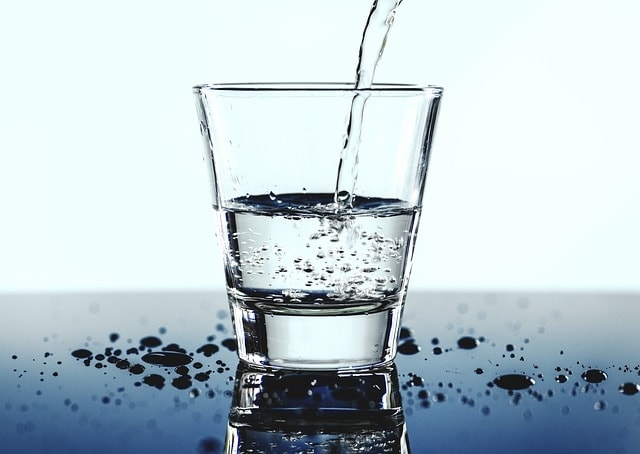
Our guide will explain the different technologies available to provide a better understanding. We’ll also help you discover the perfect model for your home.
Do You Really Need a Water Filter?
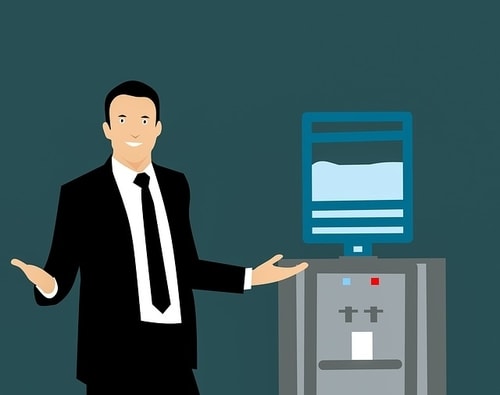
In many cases, a water purification facility will filter the tap water that you drink. This is obviously a good thing. But is it good enough?
Unfortunately, this water purification doesn’t necessarily make the water clean. And it doesn’t matter what city you live in because this is true for everyone.
When the water is tested by the authorities in your community, they only test it immediately after it’s filtered. These results seem satisfying on the surface, but the length and age of the feed lines corrode and corrupt this freshly purified water.
Most cities and towns will have their water treatment station located on the outskirts to avoid clutter or having a major eyesore in the community.
Guess what? This set up forces the water to travel along distance through pipes in order to get to your sink, shower, and other faucets.
The pipes are decades-old to say the least unless they’ve been recently replaced, which is highly unlikely. Since the water has to travel such a long distance through them, the water is no longer fresh because it becomes polluted with debris, dust, and rust along the way. But that’s only one aspect of the pollution.
Also, old pipes contain viruses, bacteria, and other unhealthy microorganisms. Oftentimes the water coming out of your faucet tastes bad and has a funky looking color. When this unthinkable scenario happens, it usually does so because of biological contamination.
The treatment of water by municipal authorities is another reason why you should consider using a water filter. Chlorinated water is an old and outdated way of treating it.
Regrettably, while it will kill certain microorganisms, it doesn’t kill all of them, it could potentially form compounds that are dangerously carcinogenic, and occasionally it will create a funky taste.
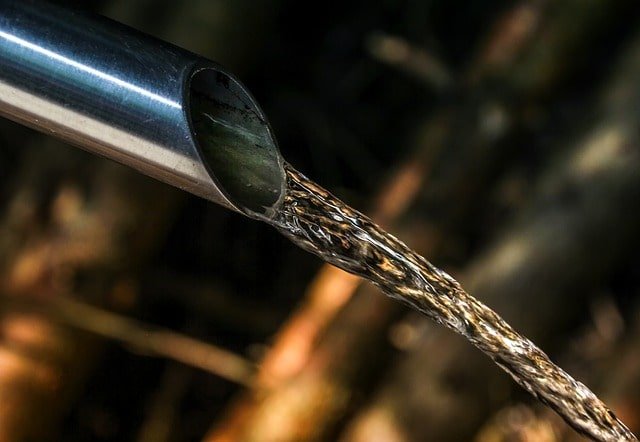
But that’s not all. Keeping your water clean is absolutely necessary if you’re looking to avoid having harmful microorganisms, bacteria, and parasites in your drinking water. As far as contamination is concerned, Cryptosporidium is one of the worst parasites ever to contaminate water. It’s resistant to chlorine, which means that it needs to be mechanically removed from water. If it gets into the water supply it can cause weight loss, dehydration, and extreme diarrhea. Also, if you are contaminated with this parasite, the symptoms of the sickness can last for as many as six weeks.
Lastly, the water supply can also experience contamination from heavy metals, pesticides, and chemicals as well. The pesticides being used in the 1940s and 50s were made up of heavy metals with a half-life that lasts a long time. Because of this long half-life, these contaminants can remain in the soil around water pipes which means it can also leak into the water supply.
In plumbing, lead was used regularly in solder and pipes, so some of the older pipes and solder could still contain lead leaching into the water. Plus there are other harmful chemicals that you may also find in water.
Common Materials
Four different filters are most presently used in households across the United States today. They all have their own different features and they use different materials to make them too. We will now look at each of the four popular types.
- Reverse Osmosis – this system actually contains more than one filter. In fact, it consists of three pre-membrane filters, a post membrane filter, and a semipermeable membrane filter. Out of all of the different types mentioned, the semipermeable membrane is the most important. Another name for this is the reverse osmosis membrane. Its job is to block and catch the contaminants based on molecular weight and size. Only the tiniest of compounds can pass through.
- Distillation – as young children we learn that boiling water attempts to clean and purify it. The distillation process is a different, more advanced and definitely more effective way to boil water to filter it. It doesn’t just boil the water, it turns it into steam which is then trapped and condensed into a separate clean container.
- Ion Exchange – this is made up of zeolite beads. When hard water is put through the filtration system, the calcium and magnesium interact with the beads, it creates an ion exchange where the ion is trapped and then it releases sodium inits place.
- Activated Carbon – out of all household water filters, this is the most popular type. It is easy to use,small, and definitely inexpensive. It uses activated carbon to block contaminants from the water. These carbons are in the form of charcoal, which aren’t very dense and quite porous to trap chemicals and absorb them while removing them from the water.
The Mechanics of the Most Popular Water Filtration Systems
Out of the four systems mentioned above, they all have their own specific mechanics and ways they work. These water filtration systems work in the following ways:
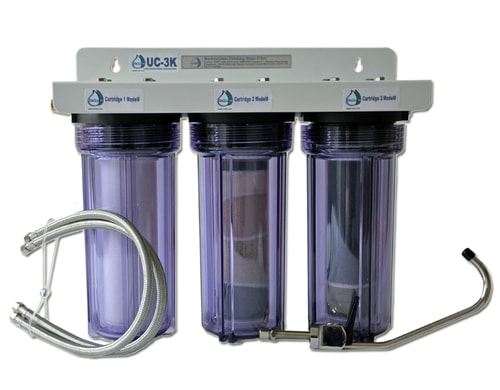
Reverse Osmosis
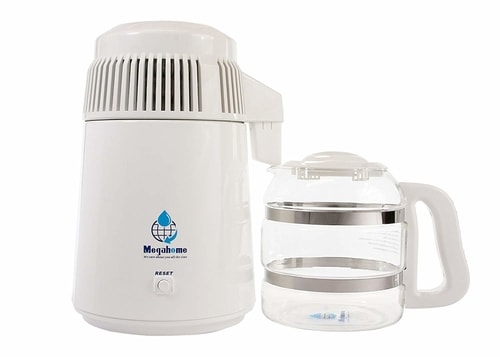
Distillation
- Reverse Osmosis – has a total of five filters, but on occasion they will even use more. First we have one that is used to block out contaminants including debris, dust, rust, and those harmful to the RO membrane. Second, they’ve added a carbon filter used to block chemicals like fluoride, chlorine,and others. Third, we have an additional carbon model that’s denser than the first used to trap smaller particles keeping water nearly free of contaminants as it approaches the membrane. Fourth, we have a reverse membrane filter used to block contaminants based on their ionic charge, molecular weight, and size. The final one is used to block viruses, bacteria, and harsh tasting chlorine as well as other smells and bad tastes. Additional models contain special filters and UV lights to balance the pH levels of the water.
- Distillation – the distillation process simply consists of boiling water until it reaches the point of steam and then capturing it. The cooled steam is then condensed and turned back into water in a different container. Unfortunately, it is possible for certain contaminants to boil faster than water, which means these contaminants often reach the second container in the form of condensed steam.
- Ion Exchange – These contain zeolite beads filled with sodium ions. Hard water contains magnesium and calcium components, which are attracted to the zeolite beads. Because of this attraction, there is an exchange of ions that creates a release of sodium. Limescale mainly consists of calcium and magnesium as well as other components, so they create a type of hard water that isn’t as tasty as softer water. When the sodium is released it will make the water taste much more salty. Some people prefer their water not to have a salty taste, and others might not be able to drink it at all because their diet strictly prohibits them from additional sodium intake.
- Activated Carbon – This works specifically through the process of absorption. It can absorb liquids and gases when they are attracted to other solids and liquids. As the water goes through this filter, it will remove the most common impurities by attracting them to the spongy surface of the carbon. These impurities will fill the deep ridges on the carbon surface and remove them from the water. Charcoal filters are excellent for removing the wide majority of contaminants, but they are incapable of blocking out limescale consisting of magnesium and calcium.Carbon also doesn’t attract other contaminants including nitrates, fluoride,microbes, and sodium, so they will still remain in the water. The final disadvantage is charcoal/carbon clogs very easily, so it will need to be replaced regularly.
Choosing The Ideal Solution for Your Situation
It’s plain to see that there are numerous options. All of the best potential options have the ability to clear water of contaminants, but some work better than others and certain filters are only capable of clearing certain contaminants.To determine the ideal water filtration system for your home, commercial property, or office, you need to test the quality of the water first. We will now provide a simple water testing guide below.
Using a Water Testing Kit
- Understand your water filtration needs – when we talk about the quality of water, we typically mean the amount of contaminants located within it. Water contaminants include but certainly aren’t limited to nitrates/nitrites, heavy metals, bacteria,pesticides, hardness, chlorine, and viruses. The quality of water is influenced by the pH levels, so it’s important to know this information as well. Chlorine is capable of disinfecting water, but it creates a different and sometimes unwelcome taste. Limescale buildup happens because of hard water, plus nitrates/nitrites and pesticides are dangerous for the health of children and adults alike. When water is acidic, it has a bad taste and it can cause pipes to corrode much quicker.
- Purchasing a testing kit to determine water quality – there are quite a few different test kits available for you to try. You can find them online or at local hardware stores as well.These kits have test strips that change in color depending on the contaminants within the water. Only purchase test kits that have different strips for nitrates/nitrites, bacteria, heavy metals, hardness, pesticides, chlorine, and pH levels. Steer clear of the testing kits that have all of this on a single strip, because you’ll only be able to determine the pH level of the water this way.
- Thoroughly read the instructions of the testing kit – each testing kit is going to have its own set of directions, so follow them accordingly. The directions will tell you how long the strip needs to be exposed to the water before it’s capable of getting your results. It will also let you know how warm the water should be during testing and you’ll learn about the differences in their color coding scale and what they mean.
- The water test – after you thoroughly read through the instructions and understand them, the water test can commence. Expose the testing strip in the water and keep it there for the right amount of time based on the directions. Remove the strip at the appropriate time and shake off the excess water. Now you’ll have to wait for an appropriate amount of time before you can take the color chart and compare it to the testing strip to learn your results.
- Water quality determination –now it’s time to take the color chart and compare it to your testing strips.There will be multiple indicators on each strip, so make sure you compare them thoroughly to the chart. Depending on the color, you’ll learn which hazardous substances are concentrated within your water. If your water is clean and doesn’t have any harmful levels of contaminants, you should run the test again just to be certain.
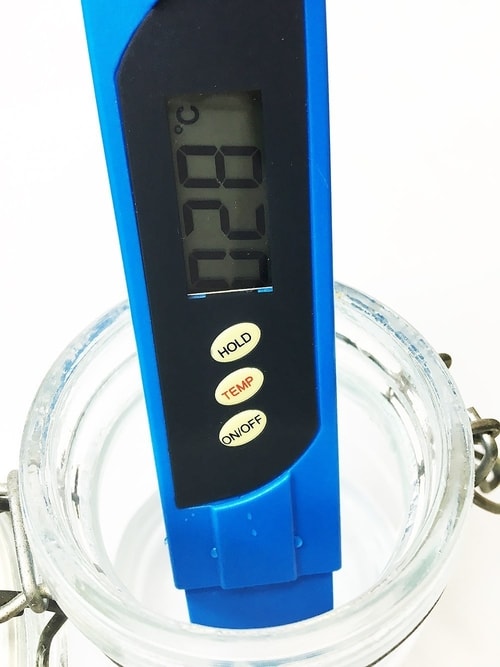
Determining Water Quality Using Your Senses
Your senses can teach you a lot about the quality of your water. Professional water experts will visually examine water, plus taste and smell it to determine the quality. Although not quite as accurate as testing the water with a kit, it certainly provides valuable information all the same. You can test water using your senses in a number of different ways that include the following:
- Testing water by taste – when testing water by taste, in certain instances you are going to come across water that is foul tasting. Do not ever swallow this water in any situation. If the taste of the water turns out to be metallic, it might mean that the pH level is too low or there is an overabundance of minerals. If there is a strong bleach taste to the water, it means chlorine is being used to treat it. If salt is heavily prevalent, it could mean that the presence of chlorine ions or sulfates is detected. The compounds described above might indicate irrigation or industrial drainage issues.
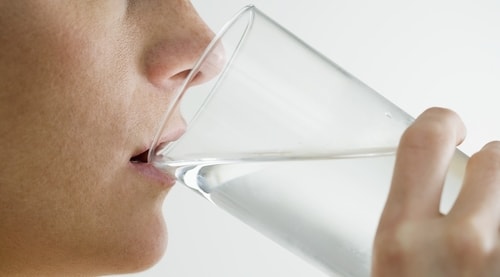
- Testing water by taste – when testing water by taste, in certain instances you are going to come across water that is foul tasting. Do not ever swallow this water in any situation. If the taste of the water turns out to be metallic, it might mean that the pH level is too low or there is an overabundance of minerals. If there is a strong bleach taste to the water, it means chlorine is being used to treat it. If salt is heavily prevalent, it could mean that the presence of chlorine ions or sulfates is detected. The compounds described above might indicate irrigation or industrial drainage issues.
- Testing water by smell – it’s definitely important to smell water to figure out if it is contaminated or not. A strong bleach smell means your local water treatment plant disinfects the water using chlorine. Once the water is exposed to air, the smell may dissipate. If there is a rotten eggs smell to the water, this could mean your faucet has an overgrowth of bacteria. So fill a glass of water, bring it to another part of the house, and within a few minutes smell it again. If the sulfurous scent is gone, it means your drain is clogged and needs to be clean. If you get the rotten eggs smell from both the hot and cold water in multiple rooms of the house, it means your pipes are contaminated and need to be cleaned out or replaced. If there is an earthy or musty smell to your water, it’s usually because of the decay or decomposition of organic matter. It’s a harmless smell, but if it bothers you nonetheless you may need to clean your drain.
- Testing water by sight – to test water by sight, you should take a glass of water and hold it near the light. When you do this, you want to determine if there is any cloudiness or floating particles. The particles could be orange, brown, or red, and if this is the case then it means your pipes and fixtures might be rusty. If there are black particles, it’s possible that there are contaminants in the hoses that are part of your water system. Hoses can actually deteriorate over time through the use of chlorine, which makes them brittle and frail. A general level of cloudiness with tan or white particles means the water levels are hard. Use your sight to figure out if the fixtures and pipes in your home are in proper working order. If there is corrosion or a large build up minerals, they will pollute your water source. And if you have above ground pipes, you should check for any leaks. Look for spots where white or blue sentiment is building up too. If it’s not possible to look at your water pipes, check for blue or rust colored stains in your toilet bowl. This indicates that your water is polluted and you should take further action.
Acquiring a Report for Water Quality
You could also check the water quality in your home by contacting the water company in your hometown to find out if they can give you a copy of the water quality report. They will have one since they have to test the water regularly.
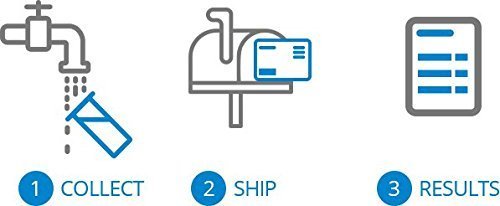
This isn’t the best method to test your water, believe it or not, because it doesn’t take into account the passage of water through the pipes before it reaches your home.
Determining Your Next Steps
After thoroughly testing your water and determining its level of contamination, it’s time to figure out where to go next. This may seem silly on the surface, but you shouldn’t overlook this part of the process.
What’s the main reason you need a water filter? You obviously had something in mind when you began this process. What about your water bothered you? Did it have a bad taste? Or were there limescale deposits on your appliances or faucets?
After determining the results from your water quality tests, did your original assumptions pan out or has something changed? Are you still looking to only soften your water or do you need to improve the level of the waters’ taste too?
Choosing the Right Model
As we’ve already shared, some filtration systems were designed to remove specific contaminants, while others would be inefficient depending on the particular type of problem or debris. Based on water test results, your budget, and your desired achievement, you will definitely have some options to choose from below.
Types
Below we have the best filtration options based on your needs:
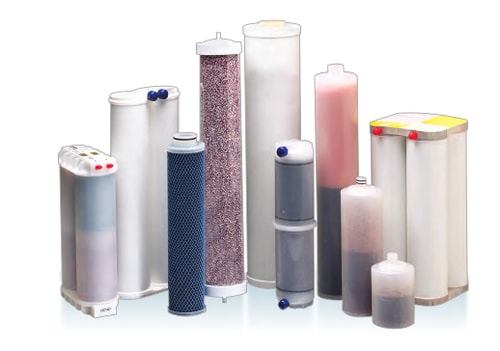
Ion Exchange Filter
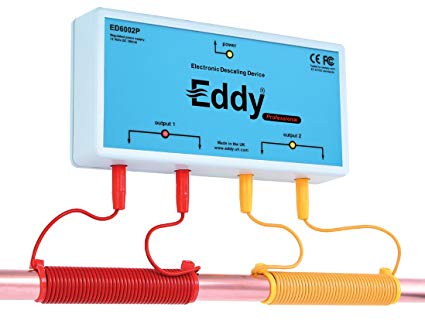
Electronic Water Softener
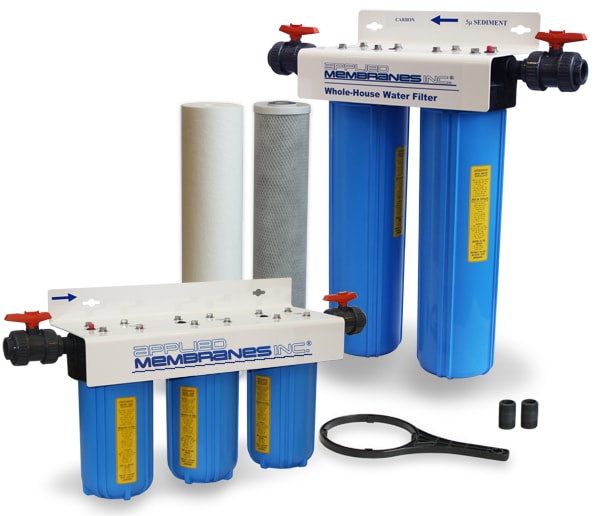
Whole House Water Filtration
- Low budget – a great low-budget choice would be an ion exchange filter. This option is excellent because it can remove calcium and magnesium from the water and put sodium particles in their place. This is great to fix any limescale problem you may have, but it’s also going to potentially turn your water more salty. These versions are typically inexpensive, they do not cost a lot to maintain, and they efficiently soften water.
- Medium budget – an electronic water softener is an excellent choice for a medium budget. You put it on the water feed pipe and the device will soften your water without the use of additional salt. An advantage of this device is its failure to alter the TDS. So your water is still going to have plenty of healthy minerals for your consumption.
- Big budget – if you have a big budget to work with, you should definitely consider a whole house water filtration system. Unlike the other models we’ve mentioned thus far, this system is so strong it can remove hard water, eliminate limescale, and much,much more.
- Limescale deposits – there a few different choices to potentially go with if you need to rid your water of limescale deposits. Consider choosing any of the options mentioned, whether it be a low-budget, medium budget, or big budget choice.
Filtering for Odor/Bad Tasting Water
If you’re looking to remove odors and bad tastes from your water, there are a few different solutions available to try. You can check out the following systems and pick based on your budget:
- Low budget – a great low-budget option to remove odor and bad tastes from water is an activated carbon filter. The process has been improved over the centuries, but our ancestors even used it many years ago. Today’s varities have a wide range of capacities and come in various sizes. If you are specifically focused on removing bad tastes and odors from your water, this is the best solution to try.
- Medium budget – a great medium budget option would be ozone water filters. They can remove a wide range of contaminants as well as odors and bad tastes. The potential side effect is your water could have a slight ozone taste and smell to it, which some people do not like.
- Big budget – the right choice for those with a high budget is a reverse osmosis water filtration system. Out of anything on the market, this is one of the best, most effective and pricier solutions.
Too Much Bacteria
Have you determined to have high levels of bacteria in your water through testing? If so, installing a filter that can kill them would be a bright idea. A few solutions to consider are as follows:
- Low budget – a great low-budget choice includes water distillers. They boil water and can turn it into steam which is condensed and then captured in a different container. During this process, the bacterium is destroyed as water reaches the boiling point at high temperatures. It’s a very efficient way to kill bacteria in water.
- Medium budget – those with a medium budget should consider UV filters. They were created specifically to destroy bacteria and viruses. Besides that, they are also simple to install,very small, but they do require a power outlet while they are in use. They are effective and will cause bacteria levels to diminish or potentially even disappear altogether, depending on certain factors.
- Big budget – the best big budget option is a reverse osmosis filter with UV light. The mechanical side will remove contaminants from the water, and the UV will kill bacteria and viruses. This process of filtration is very thorough, very effective, and quite superior to other choices.
Sizes
At this stage of the game, you understand the contamination in your water, you understand the reason why you need a water filter, and you’ve discovered the best ones for the job. The only thing remaining is to discover how large or small it should be, as well as the place you need to install it. Sizes include the following:
- Small – the smaller filters will not take up a whole lot of space and they will not interfere with normal day-to-day activities. The best models in this category include ion exchange, activated carbon, electronic water, and reverse osmosis systems in certain cases.
- Medium – these will require more storage space than smaller options, so definitely keep this in mind during the purchasing process. You may have to relocate certain items in your home in order to clear space to fit this in. The varities in this category include ozone, certain ion exchange, and the majority of reverse osmosis systems. Even a few distillation filters fit in this category too.
- Large – this type is going to take up a lot of space in your home, so you’ll definitely need to have the room for it. Some are very large so they’ll need to be installed in a basement or an outdoor shed. The filters in this category include whole house multi-layer, deionization units, and whole house water softeners.
At this point, you now know a wide range of information about water filters. In fact, you have enough info to make a buying decision. But we still have more that we’d like to teach you about this topic.
For the most part, when people do complain about their water their complaint is typically kept to one category. That’s why it’s definitely necessary to learn the basics and how they work. Now you can determine if a particular water filtration system is good for your home or not because of this knowledge and valuable information.
Technology
Don’t be afraid that this content is about to take a drastic technical turn because nothing could be further from the truth. We will explain everything you’d ever want to know about filters without going into technical detail.
Some dealers will go heavy with the technical talk even though they hardly comprehend what they are saying. We aren’t going to do that here. This section will briefly tell you about different types, share the pros and cons, and give you the ability to make your purchasing decision because you’ll have enough information to better understand these products.
Most Common Varities
Activated Carbon
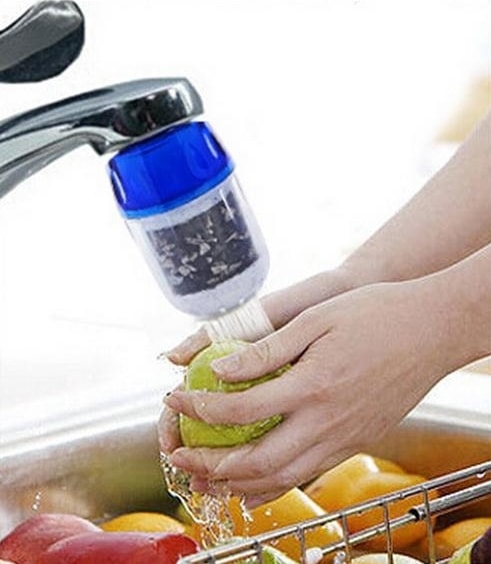
As far as filtration methods go, this is one of the oldest options. Ancient Egyptians began using activated carbon to filter their water millennia ago. The porous structure of carbon allows it to trap debris and other impurities.
These are quite effective because they remove strange tastes, funny smells, chlorine, sediment, and volatile organic compounds (VOCs). On the flip side, they aren’t very good at removing dissolved inorganic compounds, salts, or minerals.
Two popular types of carbon water filters include granulated activated and powdered block. The powdered block is more effective and has a larger surface for better absorption. It typically has additional layers between the carbons as well, which makes filtration even better.
GAC (granulated activated carbon) filters are available in a number of sizes. The finer charcoal used in this filter has a smaller surface area when compared to carbon block.
These filters have some commonalities. First,their efficacy diminishes over time, so changing the filter regularly is important. If you fail to use it for a while, you also need to change it because it loses effectiveness.
The positives of activated carbon filters include the ability to remove sediment, smells, chlorine, and weird tastes. Another positive is that they are inexpensive.
The negatives are that bacteria can grow within the filter. It also doesn’t have the ability to soften water.
Distillation
Distillation is a simple form for filtering water. The water is boiled, turned into steam, and captured separately in a different container.
The original container holds the contaminants and the second container has clean water. Some contaminants boil before the water turns to steam, so not all impurities are removed.
On the plus side, these filters are small and cheap.
On the minus side, not all of the contaminants get filtered during the distillation process, and distillation loses many of the valuable minerals.
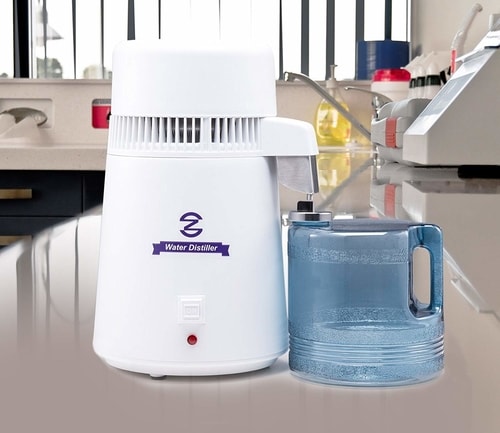
UV
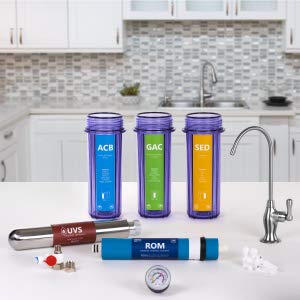
This water filter is quite efficient at removing high levels of bacteria.
It can kill a wide range of the most common forms of bacteria as well as microorganisms and viruses.
It doesn’t filter anything else though.
Speaking positively, the pros are that the filter is small and it kills a wide array of viruses and bacteria.
The cons include the need for electricity to run the device and its inability to filter chemicals or have an effect on minerals.
Reverse Osmosis
This filtration method requires multiple filters to alleviate contaminants. The first filter has mechanical properties, the next two are carbon-based filters, the fourth consists of a semipermeable membrane, and the fifth is used to remove chemicals. Occasionally additional filters are added for re-mineralization and ultraviolet filtering.
On the plus side, a reverse osmosis filter is excellent for producing clean water on a daily basis. It also removes 95% to 99% of the contaminants found in water.
On the downside, this filter does waste some water. If the water purified is improperly re-mineralized, it can also taste bland.

Ion Exchange

Ion exchange filters aren’t as commonly known as water softening filters or deionization filters. Commonly speaking, these filtration types are used most typically during the ion exchange process. So we will look closer at both of these processes.
Filters focused on deionization use beads that are charged with hydroxyl ions and hydrogen ions.
When you filter water using metallic ions, it replaces unwanted metals with hydrogen. It also replaces anions in the water with hydroxyl ions. The combination of hydrogen and hydroxyl create mineral free water.
Water softening filtration systems work similarly by exchanging calcium and magnesium ions with salt trapped in water. The salt is released and the minerals are trapped, which cause the water to become softer.
Ion exchange filter pros include removing metals from the water and water softening. Cons include salty tasting water and these filters are typically very large.
Installation
Now that you better understand different types of water filters, installing them will be your next challenge. Some options include:
- Water dispensers and pitchers– a helpful option that can be placed anywhere in your home.
- Faucet filters – you can install this right on your faucet. You need to remove the aerator of the faucet and connect the filter in its place.
- Counter – this is excellent because it installs right on your countertop. Some people don’t like the way it looks, but having your filter in easy reach is always a nice option.
- Installation underneath the sink – Water filters installed under the sink are very popular. It’s an efficient system that hides your filter from everyone underneath the kitchen cabinet.
Maintainanence
Now that you own a water filter, it’s time to learn how to take care of it. Some important things to know include:
- Bead changing – ion exchange filter owners need to change their beads on occasion. The charge is limited, so the beads become useless once the charge is spent.
- Bulb changing – when using UV filtration or reverse osmosis with UV filtration, the bulb needs to be changed occasionally. Good top-quality filters will notify you when the bulb stops working. On certain models, you’ll be able to visibly notice when the filter no longer works.
- Filter changing – no matter what system you use, you’ll need to change the filters from time to time. The manufacturer typically tells you the product life expectancy, so look through the instruction manual to determine when you should change it.
10 Benefits of Water Filter Usage
- It’s environmentally friendly, meaning it’s better than consistently buying bottled water in plastic containers that pollute our environment.
- Toxins become a thing of the past and experts will tell you that our water sources contain 2100 known toxins. Filters minimize your chances of drinking them.
- It’s cheaper to use a water filter as opposed to buying bottled water. Over the long run, your filtration system will pay itself off and pay dividends by helping you save money.
- The chlorine will be removed from your water with a filtration system. Chlorine in the water is linked with certain illnesses, so removing it is certainly a good idea.
- Your water will be free of chemicals. Many chemicals like heavy metals and pesticides find their way into the drinking water, but a filter reduces the possibility of ingesting them.
- You’ll have better looking hair and skin. Washing your body with softened water is so much better for your overall appearance.
- Filtered water smells and tastes much better than regular tap water. Well water or tap water tastes bad usually. Water filtered water removes bad smells and tastes and improves the overall quality.
- You’ll reduce your need for plastic. By drinking filtered water, you’ll cut down on buying plastic bottles that contain BPA, a chemical known to create health problems.
- It”s is great for the kids. It eliminates poisoning compounds like nitrate and nitrite from municipal water sources and well water.
- Water is much healthier after it’s gone through a filter. Many of the contaminants, bacteria, and chemicals are removed and the water is now clean.
Water Purification vs. Water Filtration
As we have learned, water filter systems pull contaminants from the water supply and reduce or eliminate them. But note that some contaminants will still remain even after the filtration process. The water is not completely pure unfortunately.
On the other hand, water purification will completely remove from 90% to 99% of the pollutants contaminating the water. This method does make water pure, but it also removes all of the minerals which poses its own set of problems.
Are Important Minerals Removed during Water Filtration?
While some water filters do remove minerals from the water, this isn’t going to happen in every situation. Reverse osmosis filters remove as much as 99% of the pollutants in drinking water. But they also remove many healthy minerals. On the other hand, UV filters leave the majority of the water intact including the minerals and kill only the bacteria. As you can see, some filtration systems have disadvantages as well as advantages.
Final Thoughts
In our chemical and debris filled world, water filters are definitely in need. And it doesn’t matter what type of water source you drink from, be it from a municipal water feed or well, because you can improve on the health of your water.
At first glance, using a water filter possibly seems like an expensive proposition. But when you think about it, you’ll save money over the long-term by eliminating your bottled water purchases. Since you only need to change your filters every so often, this is the cheaper option once your system is up and running.
Some people believe that water filters are only needed for drinking water. But that’s far from the truth. In fact, if you take a shower in filtered water you’ll have healthier looking skin and you’ll have cleaner hair that will stay that way much longer.
So, if you haven’t done so already, consider installing a whole house filtration system. If that’s too far out of reach, at least begin filtering your drinking and cooking water to improve the overall health and well-being of you and your family.
